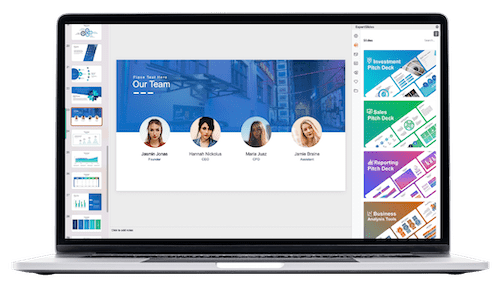Presentation Survey Questions – Engage Your Audience
Table of Contents
Utilizing survey questions is a highly effective method for engaging your audience during a presentation. By integrating survey questions into your presentation, you can actively involve your audience in the discussion and simultaneously collect valuable feedback. This approach not only maintains audience engagement but also provides insights into their preferences and interests, enabling you to tailor your content to better meet their needs.
One strategy for incorporating survey questions into your presentation is to employ a live polling tool, which allows audience members to respond to questions in real-time. This approach encourages participation and provides instant feedback that can be used to guide the direction of your presentation. Additionally, including open-ended survey questions at the end of your presentation can gather more detailed feedback from attendees.
By soliciting their thoughts and opinions, you can gain a deeper understanding of what resonated with them and identify areas that may require improvement for future presentations.
Key Takeaways
- Use a variety of survey questions to engage your audience and gather valuable insights before your presentation.
- Understand your audience’s demographics, interests, and preferences to tailor your content and make it more relevant and engaging.
- Create interactive presentation content such as polls, quizzes, and interactive Q&A sessions to keep your audience engaged and involved.
- Gather feedback from attendees through live polls, Q&A sessions, and post-presentation surveys to understand their experience and improve future presentations.
- Encourage audience participation through interactive activities, discussions, and group exercises to create a more engaging and memorable presentation.
Understanding Your Audience

Before you can effectively engage your audience during a presentation, it’s important to have a clear understanding of who they are and what they are interested in. This requires taking the time to research and analyze your audience demographics, such as their age, gender, occupation, and interests. By understanding these factors, you can tailor your content to better resonate with your audience and increase their engagement.
In addition to demographic information, it’s also important to consider the knowledge level and experience of your audience. Are they experts in the topic you are presenting, or are they beginners? Understanding their level of expertise will help you gauge the depth and complexity of the content you present.
Furthermore, it’s important to consider the cultural background and values of your audience to ensure that your presentation is respectful and inclusive. By taking the time to understand your audience, you can create a presentation that is relevant and engaging for them.
Creating Interactive Presentation Content
One of the most effective ways to engage your audience during a presentation is by creating interactive content that encourages participation and discussion. This can be achieved through various means, such as incorporating multimedia elements like videos and images, using storytelling techniques to captivate your audience, and incorporating interactive exercises or group activities that require audience involvement. For example, you can use interactive polling tools to gather real-time feedback from your audience on specific topics or questions related to your presentation.
This not only encourages participation but also provides valuable insights that can help guide the direction of your presentation. Additionally, you can incorporate interactive elements such as quizzes or games that challenge your audience’s knowledge and keep them engaged throughout the presentation.
Gathering Feedback from Attendees
| Question | Average Rating | Feedback |
|---|---|---|
| Was the presentation engaging? | 4.5 | Many participants found the presentation to be engaging and interactive. |
| Did the presenter effectively involve the audience? | 4.2 | Some participants felt that the presenter could have involved the audience more. |
| Were the visual aids helpful in keeping the audience engaged? | 4.7 | Most participants found the visual aids to be very helpful in keeping them engaged. |
After your presentation, it’s important to gather feedback from attendees to gain insights into their experience and identify areas for improvement. This can be done through various means, such as distributing post-presentation surveys, conducting one-on-one interviews with select attendees, or using live polling tools during the presentation to gather instant feedback. By gathering feedback from attendees, you can gain valuable insights into what resonated with them, what areas may need improvement, and what topics they would like to see addressed in future presentations.
This information can help you refine your presentation skills and tailor your content to better meet the needs and interests of your audience.
Encouraging Audience Participation

Encouraging audience participation is key to keeping your audience engaged during a presentation. There are various strategies you can use to encourage participation, such as asking open-ended questions that prompt discussion, incorporating group activities that require audience involvement, and using interactive polling tools to gather real-time feedback. By actively involving your audience in the discussion, you can create a more dynamic and engaging presentation that captures their attention and keeps them invested in the topic at hand.
Additionally, encouraging participation can help create a sense of community and collaboration among attendees, fostering a more positive and interactive presentation experience.
Tailoring Content to Audience Preferences
To effectively engage your audience during a presentation, it’s important to tailor your content to their preferences and interests. This requires taking the time to understand what topics resonate with your audience, what challenges they may be facing, and what information they are seeking. By tailoring your content to meet the needs of your audience, you can create a more relevant and engaging presentation that speaks directly to their interests and concerns.
This not only helps to capture their attention but also increases the likelihood that they will walk away from the presentation with valuable insights and knowledge that they can apply in their own lives or work.
Using Technology to Enhance Engagement
In today’s digital age, technology can be a powerful tool for enhancing engagement during presentations. There are various technological tools and platforms that you can use to create a more interactive and dynamic presentation experience for your audience. For example, you can use live polling tools to gather real-time feedback from attendees on specific topics or questions related to your presentation.
This not only encourages participation but also provides valuable insights that can help guide the direction of your presentation. Additionally, you can incorporate multimedia elements such as videos, images, and interactive slideshows to captivate your audience and keep them engaged throughout the presentation.
Measuring the Effectiveness of Your Presentation
After delivering a presentation, it’s important to measure its effectiveness in engaging your audience and achieving its intended goals. This requires gathering data on various metrics such as audience participation levels, feedback from attendees, and any changes in knowledge or behavior resulting from the presentation. By measuring the effectiveness of your presentation, you can gain valuable insights into what worked well and what areas may need improvement for future presentations.
This information can help you refine your presentation skills and strategies, ultimately leading to more impactful and engaging presentations in the future. Additionally, measuring effectiveness allows you to demonstrate the value of your presentation to stakeholders and justify any resources invested in its development and delivery. In conclusion, engaging your audience during a presentation requires a deep understanding of their preferences and interests, as well as the use of interactive content and technology to encourage participation and gather feedback.
By tailoring your content to meet the needs of your audience and measuring the effectiveness of your presentation, you can create a more engaging and impactful experience for attendees. With these strategies in mind, you can deliver presentations that captivate your audience and leave a lasting impression.
FAQs
What are presentation survey questions?
Presentation survey questions are questions that are asked to the audience after a presentation to gather feedback and insights about the effectiveness of the presentation. These questions can cover various aspects of the presentation, such as content, delivery, and engagement.
Why are presentation survey questions important?
Presentation survey questions are important because they provide valuable feedback to the presenter, allowing them to understand the audience’s perspective and make improvements for future presentations. They also help in gauging the audience’s level of engagement and understanding of the content.
What are some examples of presentation survey questions?
Examples of presentation survey questions include: – How engaging was the presentation? – Did the presenter effectively communicate the key points? – Were the visual aids (slides, videos, etc.) helpful in understanding the content? – Did the presentation meet your expectations? – What could the presenter do to improve future presentations?
How can presentation survey questions help in engaging the audience?
By asking the audience for their feedback through survey questions, presenters can demonstrate that they value the audience’s opinions and are committed to improving their presentations. This can create a sense of engagement and involvement among the audience, making them feel more invested in the presentation.
What are some best practices for creating presentation survey questions?
Some best practices for creating presentation survey questions include: – Keeping the questions clear and concise – Using a mix of open-ended and closed-ended questions – Tailoring the questions to the specific goals of the presentation – Asking for feedback on specific aspects of the presentation, such as content, delivery, and visuals
Get 15+ Mio. PowerPoint Assets - FREE SIGN-UP

Sign up for free to our PowerPoint extension, ExpertSlides. Everything you need, directly in PowerPoint. No credit card required.
Related Posts
Recent Posts
Main Menu
Knowledge base
Useful Links






